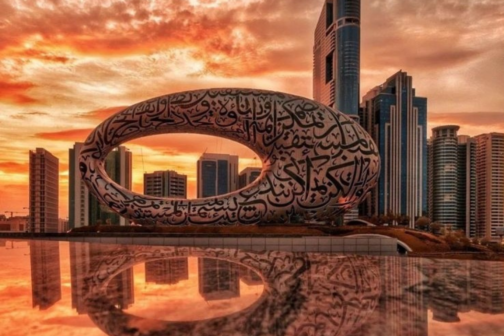North Texas is known nationally for its commercial real estate prowess. Competing here is not for the faint of heart. The region is home to globally recognized industry leaders and companies. It’s also seen as a land of opportunity. But breaking into the market with so many long-term players isn’t always easy.
It was opportunity that lured Jack Matthews to Dallas from Canada in 1988. At the time, the North Texas market was experiencing a downturn. An investor with money to spend, Matthews was welcomed by the real estate community with open arms.
But as an outsider with no biases, he was confused by the lack of investment just south of downtown Dallas. The discrepancy in land prices was significant. He decided to roll the dice and pioneer the area. His bets in projects like South Side on Lamar, Gilley’s Dallas, the Omni Dallas Hotel, and others have paid off.
In the last 15 years, he and his Matthews Southwest have developed more than 12 million square feet of office, hotel, multifamily, and other projects in North America. He also has built a significant amount of industrial space. But unlike many of the chest-pounders in the region, Matthews prefers to operate under the radar. His heads-down approach gives the impression that Matthews Southwest is a quiet little company. In truth, it’s anything but.
D CEO recently had a chance to catch up with the developer and investor to learn more about his company’s latest projects and his business strategies. Here’s what he had to say.
D CEO: Let’s start by getting an update on some of the projects you’re working on now.
JACK MATTHEWS: “One of the largest deals we’re working on is in Squamish, British Columbia, called The Oceanfront. It’s about a $5 billion project on 80 acres between two mountains directly on the Pacific Ocean, that will consist of a hotel, movie studio, retail, office, and residential which will be the majority of the peninsula. We’re just finishing up our second building there, and we’re doing a 13 acre beach park that should be open for next summer.We’ve been involved in the project for about eight years.
“Also in the same market, about 45 minutes north of downtown Vancouver, we are on the cusp of doing a $100 million debris flow barrier; it’s like a dam, except the dam is up in the mountains. It doesn’t hold the water back; it slows down water so areas don’t get flooded. Building that dam opens up about 500 acres of development for us and about a $3 billion project. Both of these deals will be incredibly green, beyond anything that has ever been done in that market.”

Museum of the Future, Dubai. With ancient relics behind velvet ropes, the museum is a gateway to a future world. Each floor is like a film set from a future that you can inhabit, explore, and interact with. Matthews Southwest EMEA served as project manager.
D CEO: You’ve also been doing some work in Dubai and other markets around the globe.
MATTHEWS: “Yes, we were the project manager of The Museum of the Future in Dubai, and we’ve been doing more work in the region. Currently, we are also involved in Mexico, Canada, and the U.S.”
D CEO: What are some of the projects you’re currently working on in America?
MATTHEWS: “We have a $1.3 billion development in Fort Lauderdale that doubles the size of the convention center in Broward County. Also under construction is a new 800-room hotel and leaves about eight acres on the inter-coastal for restaurants and entertainment and outdoor events. It’s well under construction, and the hotel is about the 17th floor out of 27. It should be complete in 2025.
“We’re also building a hotel in Colorado Springs, Colorado. It’s well under construction. It’s at the north end of the U.S. Air Force Academy. It’s a four-star hotel; called Hotel Polaris, It’s just under 400 rooms.
D CEO: Matthews Southwest has made a concerted effort to do some of its projects in partnerships. Can you tell me a little bit about that?
MATTHEWS: “Yes. We have about 10 different partnerships that involve nonprofits or minority ownership—people who couldn’t otherwise get financing or equity. We provide the funding and oversee the development of whatever’s getting developed. So, we act as their full partner, but they’re doing the work. Individuals come in as a 50-50 partner, but we put up 100 percent. Once we’re paid back, it’s straight up 50-50 going forward. The goal is for everyone to achieve success and success is when they are able to buy me out. We’ve been doing this for 10 years, and it has been fantastic.
“In Houston, two partners who provide jobs to people who couldn’t get jobs elsewhere, second-chance employees and others who had issues in their backgrounds that made it a challenge. They’re building about 30 houses a year now—it’s profitable, and it’s great. They will buy me out, I’m guessing, in about two to three years. The problem is we get along too well. [laughs]
“And The Galbraith, for example, 65 percent of the beneficial ownership of this ends up going to nonprofits. In Hutchins, we did a 300-unit apartment development. That one was a 50-50 partnership with Family Gateway, so they got 50 percent of the fees, 50 percent of the ongoing cash flow, 50 percent of the development. It’s a fun story. They’re going to end up with 100 percent of the project in 15 years or so. These are people and organizations who need help, and it’s very rewarding.”
D CEO: We’ve heard that you’ve assembled a team to pursue the new Dallas Convention Center project. Can you talk about that?
MATTHEWS: “We have a phenomenal team. It includes some very successful partners that we’ve had in the past, as well as new partners. The team that put SoFi Stadium together and the team that did the rework at LaGuardia Airport are partners. The team is 49 percent minority-owned, but 80 percent of the owners are minorities. There are four minority owners and one White guy—me. The quality of the team is second to none. Any one of the partners would be qualified to win it themselves; it’s just an outstanding team.”
D CEO: What impact will the convention center redevelopment have on Dallas? What do you think it means for this community?
MATTHEWS: “It will be incredible for Dallas. It has a chance to further join downtown with South Dallas. If done properly, the flow out of the convention center by visitors to the city will go east, north, and south into other areas of the city. It will correct a lot of sins that happened when Interstate 30 was put in.”
D CEO: What does the potential opportunity to work on this project mean to you personally?
MATTHEWS: “It’s a fulfillment of what downtown needs to do. From a business standpoint, if all the city does is do it right, I’m very, very happy. They don’t have to do it with us; they just have to do it right.”
D CEO: You helped pioneer development in the area south of downtown after you came to Dallas from Canada. What led you to that part of the region, and what has kept you there?
MATTHEWS: “We started buying land in South Dallas about 25 years ago. What led me there was the value of the land. I couldn’t understand the great disparity in land prices between north and south. I knew that a longtime bias needed to be corrected and that the only way it was going to be corrected was for us to be successful. And so so far, we’ve been pretty successful.”
D CEO: You started with South Side on Lamar, transforming a former Sears store and distribution center into a mixed-use development.
MATTHEWS: “Yes. The first was South Side on Lamar. Then, it was the Dallas Police Department, and then Gilley’s. After that, it was The Beat and Southside Flats, both multifamily projects, and then the Alamo Drafthouse Cinema. We also, of course, did the Omni Dallas hotel and The Belleview, an apartment development that’s just down the road a little bit.”
D CEO: In the past 25 years, how have you seen the South Dallas market change?
MATTHEWS: “There still is a discrepancy in land prices. But it used to be five cents on the dollar, and now it’s probably 50 cents on the dollar. There’s been a lot of improvement.”
D CEO: Matthews Southwest is known for its long-term view and its low-debt approach.
MATTHEWS: “Yes. We are building the company still and putting money back into it. As a result, that’s why we can do some of the things that we do. We’re not in a rush to do things. Other companies need to get business and get that next check. We don’t need it. So it makes us good partners with cities and governments that sometimes take their sweet time with things.
“Less than 15 percent of our assets are encumbered with debt. So that means we are heavily-equity, low-debt, and that allows us to hold large land positions and not be in a hurry. We’re also not forced to sell when everyone else is. Bad times have been our best times. In this market right now, we’re still not buying yet; we’re waiting to see where it goes.
“So, it’s low-debt, high equity. Most companies in our business, when they make money, they distribute it. So instead of building a company, they’re building bank accounts. What I’ve found is that bank accounts don’t give anyone a job. It also forces us to build things that we believe in long-term. In terms of discipline, it makes us better.”
D CEO: What’s your ownership structure like at your company?
MATTHEWS: “The base company is employee-owned. I’m the controlling shareholder. So, when we put our core team together, they all own part of the company. And we’re always looking to build the company with the younger, smarter people who can have time to learn from the guys who have been around for a while. We’re very conscious of that. And we also look for ways for them to have equity. People aren’t micromanaged; they’re all part of a team and accountable to each other. I’ve never had to have a conversation with anyone and tell them they have to work harder; I’ve had a lot of conversations where I’ve said they have to take more time off.”
D CEO: What else is driving growth at Matthews Southwest?
MATTHEWS: “More than anything else, we have grown through partnerships. We grow geographically through partnerships, and we go into different asset classes. The partnerships are set up in a way that they are long-term. The intention is always to learn about our partners and see where things go from there.”
Author








